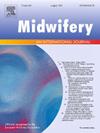影响中低收入国家妇女剖腹产偏好的多层次因素:一项系统综述
IF 2.6
3区 医学
Q1 NURSING
引用次数: 0
摘要
妇女对剖腹产(CS)的偏好是导致各国和各地区剖腹产率不断上升且差异很大的一个重要因素。这一趋势在低收入和中等收入国家尤为明显,在这些国家,CS的过度使用和使用不足都可能造成重大健康风险。了解影响CS偏好的多层次因素对于促进该程序的适当使用和确保最佳的孕产妇和新生儿健康结果至关重要。目的系统回顾影响中低收入国家女性择偶偏好的多层级因素的文献,探讨择偶偏好的普遍性。方法按照系统评价和荟萃分析首选报告项目(PRISMA)进行系统评价。检索了6个电子数据库:Academic Search Ultimate (EBSCO)、MEDLINE (EBSCO)、Nursing &;联合健康保险(ProQuest), PubMed, ScienceDirect和Scopus。搜索包括2014年1月至2024年8月发表的研究。每篇文章的质量都是用乔安娜布里格斯研究所的关键评估工具来评估的。本综述共纳入17项研究。CS偏好的比例差异很大,在中低收入国家从8.8%到58%不等。基于生态系统,将影响CS偏好的多层次因素分为四个层次:微系统(社会人口因素、生殖因素、心理因素和识字相关因素)、中系统(医疗影响、家庭和亲属影响)、外系统(医疗环境和社交媒体影响)和宏观系统(社会文化因素)。结论微系统、中观系统和宏观系统三个层面的因素均具有与生态系统一致的实质影响。为了减少不必要的CS,未来的研究应综合探索多层次的因素。政策制定者应该在整个系统中实施突出的因素。本文章由计算机程序翻译,如有差异,请以英文原文为准。
Multi-level factors influencing caesarean section preferences among women in low- and middle- income countries: A systematic review
Background
Women’s preferences regarding caesarean section (CS) are a significant contributing factor to the increasing and widely varying rates of this procedure across countries and regions. This trend is particularly pronounced in low- and middle-income countries (LMICs), where both overuse and underuse of CS can pose significant health risks. Understanding the multi-level factors influencing CS preferences is essential for promoting the appropriate use of this procedure and ensuring optimal maternal and neonatal health outcomes.
Aim
To systematically review literature examining multi-level factors influencing CS preferences among women in LMICs through ecological systems and exploring the prevalence of CS preferences.
Methods
A systematic review was conducted following the Preferred Reporting Items for Systematic Reviews and Meta-Analysis (PRISMA). Six electronic databases were searched: Academic Search Ultimate (EBSCO), MEDLINE (EBSCO), Nursing & Allied Health Premium (ProQuest), PubMed, ScienceDirect, and Scopus. The search included studies published from January 2014 to August 2024. The quality of each article was assessed using the Joanna Briggs Institute’s critical appraisal tool.
Findings
A total of 17 studies were included in this review. The proportion of CS preferences varied significantly, ranging from 8.8 % to 58 % in LMICs. The multi-level factors influencing CS preferences were summarized across four levels, based on ecological systems: microsystem level (sociodemographic factors, reproductive factors, psychological factors, and literacy-related factors), mesosystem level (healthcare influence, family and relative influence), exosystem level (healthcare environment and social media influence), and macrosystem level (socio-cultural factors).
Conclusion
Factors within the microsystem, mesosystem, and macrosystem levels displayed the substantial influence aligned with ecological systems. To reduce unnecessary CS, future research should comprehensively explore multi-level factors. Policymakers should implement prominent factors across the system.
求助全文
通过发布文献求助,成功后即可免费获取论文全文。
去求助
来源期刊

Midwifery
医学-护理
CiteScore
4.50
自引率
7.40%
发文量
221
审稿时长
13.4 weeks
期刊介绍:
Midwifery publishes the latest peer reviewed international research to inform the safety, quality, outcomes and experiences of pregnancy, birth and maternity care for childbearing women, their babies and families. The journal’s publications support midwives and maternity care providers to explore and develop their knowledge, skills and attitudes informed by best available evidence.
Midwifery provides an international, interdisciplinary forum for the publication, dissemination and discussion of advances in evidence, controversies and current research, and promotes continuing education through publication of systematic and other scholarly reviews and updates. Midwifery articles cover the cultural, clinical, psycho-social, sociological, epidemiological, education, managerial, workforce, organizational and technological areas of practice in preconception, maternal and infant care.
The journal welcomes the highest quality scholarly research that employs rigorous methodology. Midwifery is a leading international journal in midwifery and maternal health with a current impact factor of 1.861 (© Thomson Reuters Journal Citation Reports 2016) and employs a double-blind peer review process.
 求助内容:
求助内容: 应助结果提醒方式:
应助结果提醒方式:


